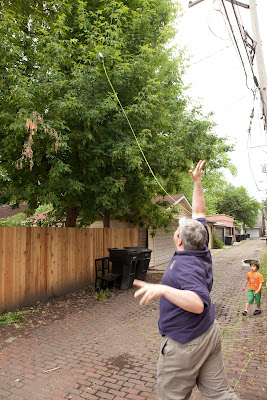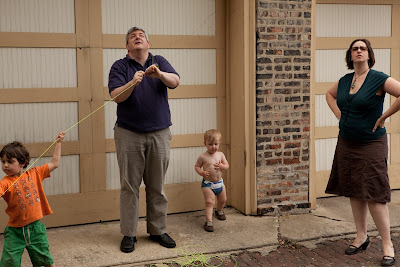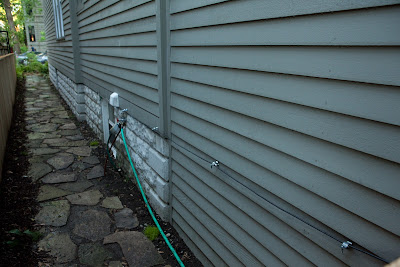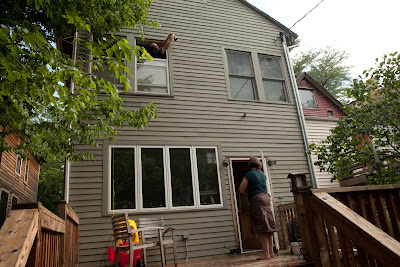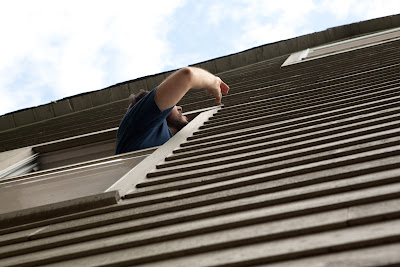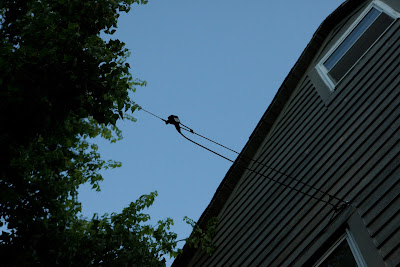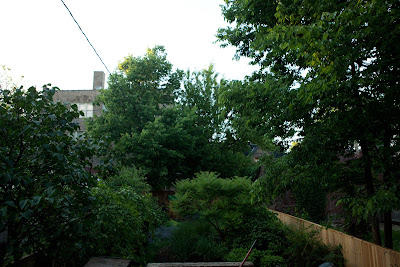So it turns out I couldn’t hear anything on my backyard horizontal-wire antenna because I had it hooked up to a handheld walkie-talkie tranceiver. In brief: those things can’t decode the sidebands used on the low frequencies, and have horrible sensitivity and selectivity. As soon as I hooked up a “real” HF tranceiver (my new ICOM IC-7200), I could hear people chatting on all sorts of long wavelengths. Amazing!
At this point, I took a business trip to Atlanta with my handie-talkie in my bag. From the 20th floor of my midtown hotel I finally was able to make my very first contact to a local area ham over 2 meter FM. He welcomed me to the hobby and we blabbed for a while. The next night I participated in an Atlanta area multi-way chat session over a repeater. My enthusiasm only increased after this.
Back at home in Chicago, I finally made my first couple of contacts over the 20 meter band: first to St. Louis, then to central Ohio. And tonight, I’ve made contacts with New York, Maryland, and Massachusetts as part of a special 4th of July weekend “event” — a game in which you try to contact specially planted operators in each of the 13 colonies. If you reach all 13, you get a special certificate. I thought this was silly at first, but after reaching three, I started getting eager to hunt down the fourth! Maybe these contests are more addictive than I expected…
I finally made contact with some local hams as well, using a Chicago-area repeater on top of the Standard Oil building downtown. They were quite welcoming, asking me to meet them at their monthly meeting or every-Saturday brunch at a local diner. I think it’ll be great to get some direct support from people nearby, rather than pestering my mentor over email all the time!
I wonder if anyone has ever actually written an ethnography of amateur radio culture. (Clare, do you know?) It’s been a fascinating jump into the deep-end of a very specific set of rituals, jargon, and history. Some initial observations I’ve made:
- 90% of those participating are retired men. Much like my love of banjo and barbershop quartets, I seem to have yet again confirmed that I am an old guy at heart.
- The country seems populated with tons of amateurs like me with “small” transmission power (between 5 and 25 watts), and a few diehards with “big” transmission power (anywhere from 500 to 1200 watts). When scanning the bands, the typical scenario shows up over and over: some big-gun is asking for contacts, and dozens of small fish are screaming all at once to be recognized, hoping they’re heard in the crowd. The big gun chooses a lucky minnow, they exchange callsigns and say hello, log each other, and then the crowd starts screaming again. It’s like the big gun is the pretty girl at the party — everyone gathers around and wants to chat with her. Perhaps this is why hams quest to build ever more powerful antennas in their backyards; more transmission power creates more popularity!
- Because the communication mode is simplex (you can’t transmit and receive at the same time, like you can on a telephone), people have a very special set of rituals for “passing the microphone” back and forth. For two people chatting, it’s the usual junk you hear truckers say on CB radio: they end their statements with “over” or “back to you”. But in 3 or 5 way chat, people pass control around in a very polite circle. When people get the floor, they tend to ramble and pontificate for at least 2 minutes before passing it on. The conversation ends up sounding more like a set of parliamentary speeches, rather than guys sitting around at a bar.
That’s the news from the field for now. More to come.


